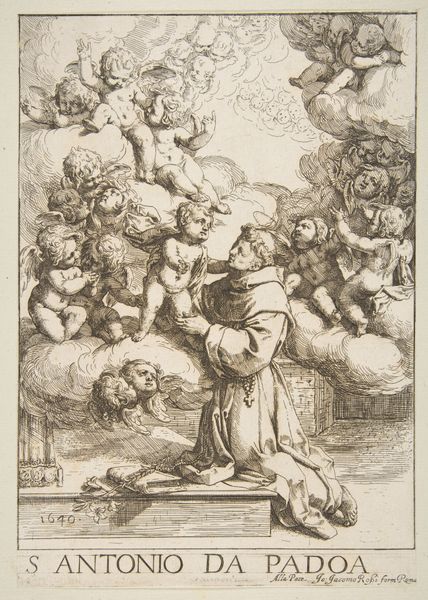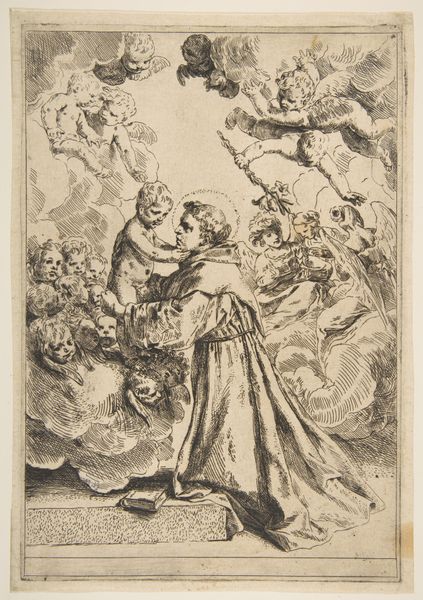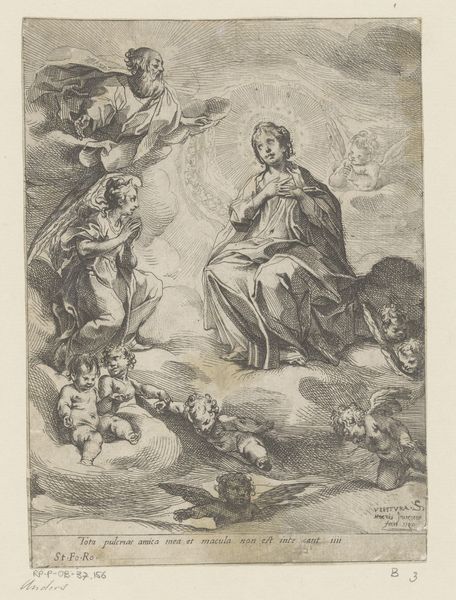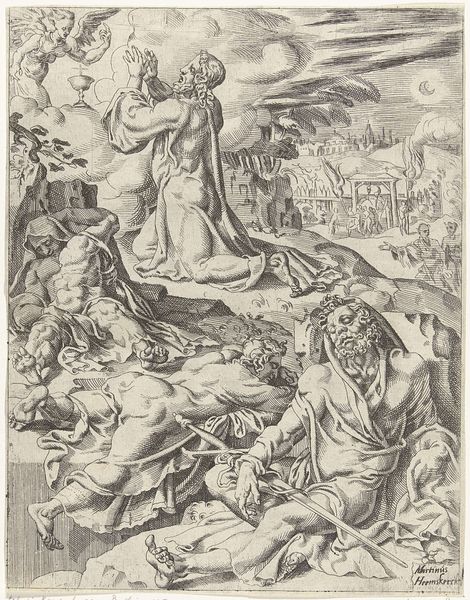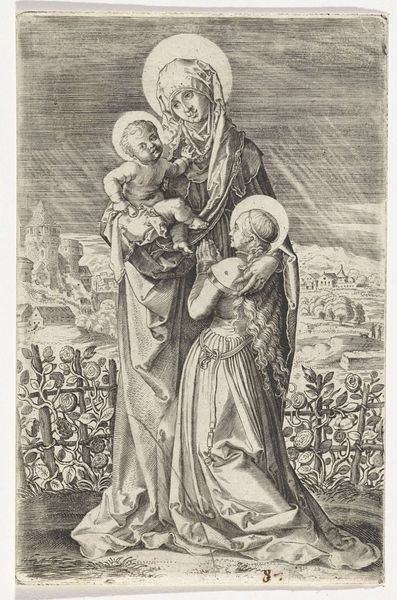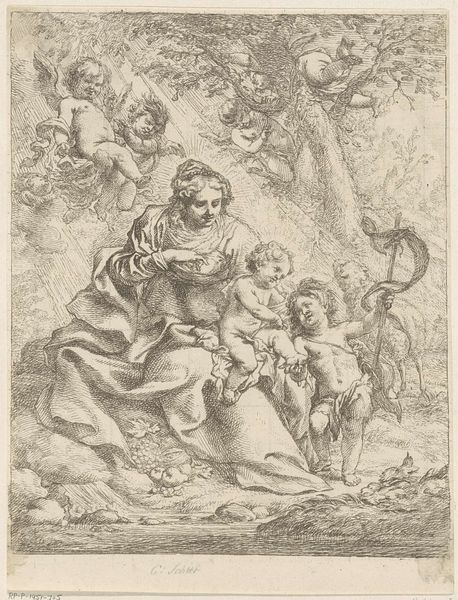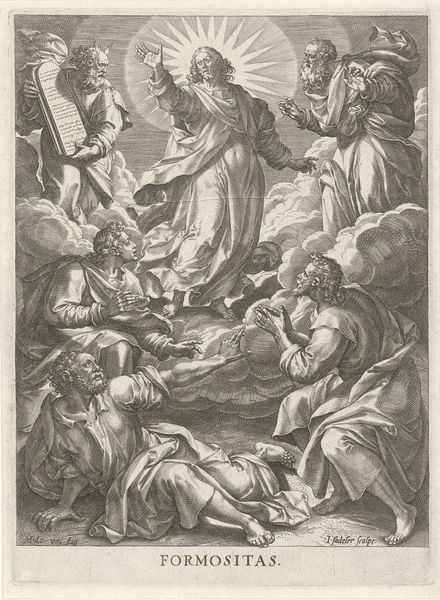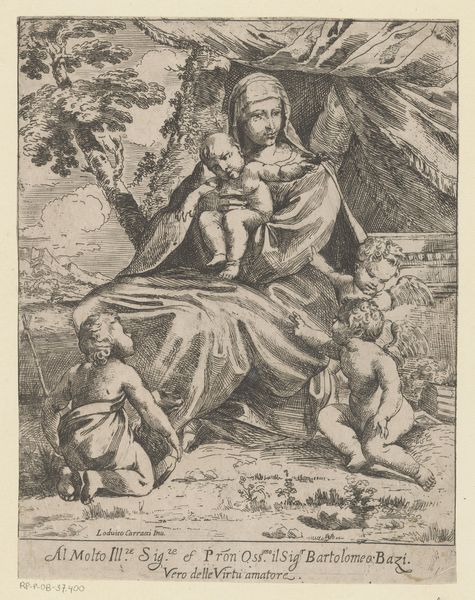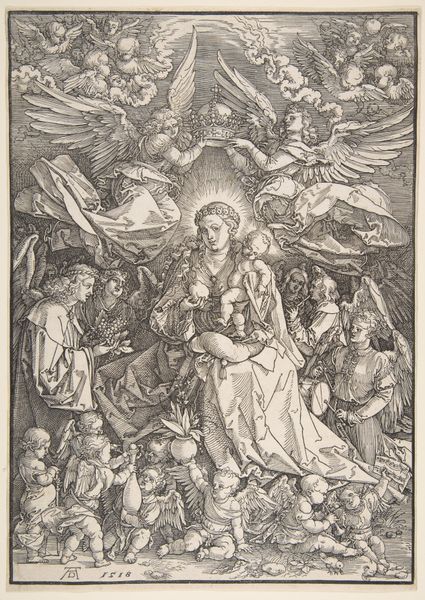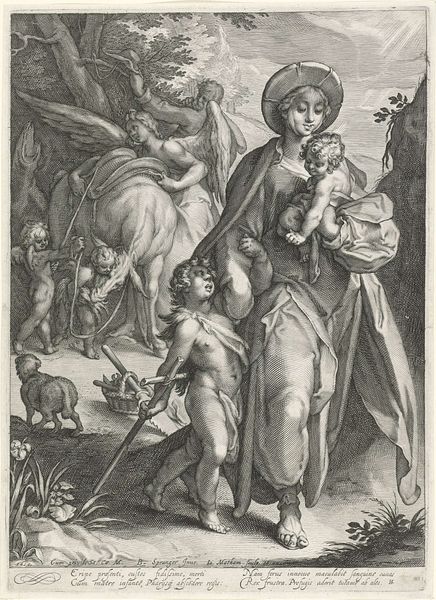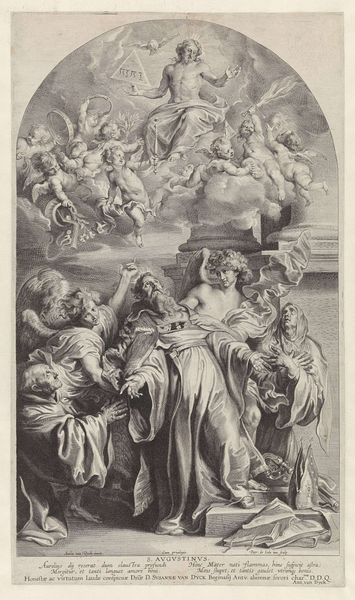
Saint Anthony of Padua adoring the Christ Child in Glory 1635 - 1645
0:00
0:00
drawing, print, etching
#
portrait
#
drawing
#
ink drawing
#
baroque
# print
#
etching
#
figuration
#
history-painting
#
christ
Dimensions: Sheet: 10 7/16 × 6 15/16 in. (26.5 × 17.7 cm)
Copyright: Public Domain
Curator: This is Simone Cantarini’s etching, "Saint Anthony of Padua adoring the Christ Child in Glory," created sometime between 1635 and 1645. The work employs the delicate strokes typical of baroque etching techniques. Editor: It strikes me as quite ethereal. There's an almost overwhelming abundance of cherubic figures, contrasting with the earthiness suggested by Saint Anthony's dark, simple robes. The sharp, directional lines pull my eye up the composition. Curator: The material conditions surrounding the making of etchings like this are quite interesting. Think about the economics of printmaking in 17th-century Italy. This wasn't a unique, one-off piece; it was made to be reproduced and distributed. What implications did this reproducibility have? Editor: Exactly. It highlights a tension present even today: access to art. Printmaking democratizes art, allowing wider audiences – including those of lower socio-economic classes – to engage with religious imagery, reinforcing ideological narratives. Curator: It's worth noting Cantarini's skills here. Etching is labour-intensive, and this level of detail required the skilled hands of artisans, revealing art's deep connection to craft. Look closely at how the lines define forms and create tonal variations. The etching process allows for the efficient production of these detailed designs, serving commercial functions alongside devotional ones. Editor: I’m struck by the gendered representation. The abundance of cherubs – mostly passive and childlike – and then St Anthony, whose piety is visualized in the devotion to Christ. Who consumes and who creates? In what ways does this dynamic reinforce traditional power structures? Curator: I think considering audience and intent is really helpful in interpreting such works. Did Cantarini create this for individual devotional use, or was it intended for wider circulation, and if so, how might the printing house that helped facilitate the distribution influence this? Editor: Those are crucial questions. Exploring beyond the pure aesthetic appreciation—asking, for instance, how images like these solidified notions of masculinity and devotion—offers critical insights into baroque society. Curator: It does remind us of the layered nature of art production, reminding us to look closely at its components – artistic skill, technical processes and distribution networks – rather than view it as purely divinely inspired. Editor: Agreed. Understanding that helps dismantle the romanticism surrounding the singular "genius" artist, directing our gaze toward collaborative contributions that give context to the final image, like the power of this work being available and reproducible during its time.
Comments
No comments
Be the first to comment and join the conversation on the ultimate creative platform.
